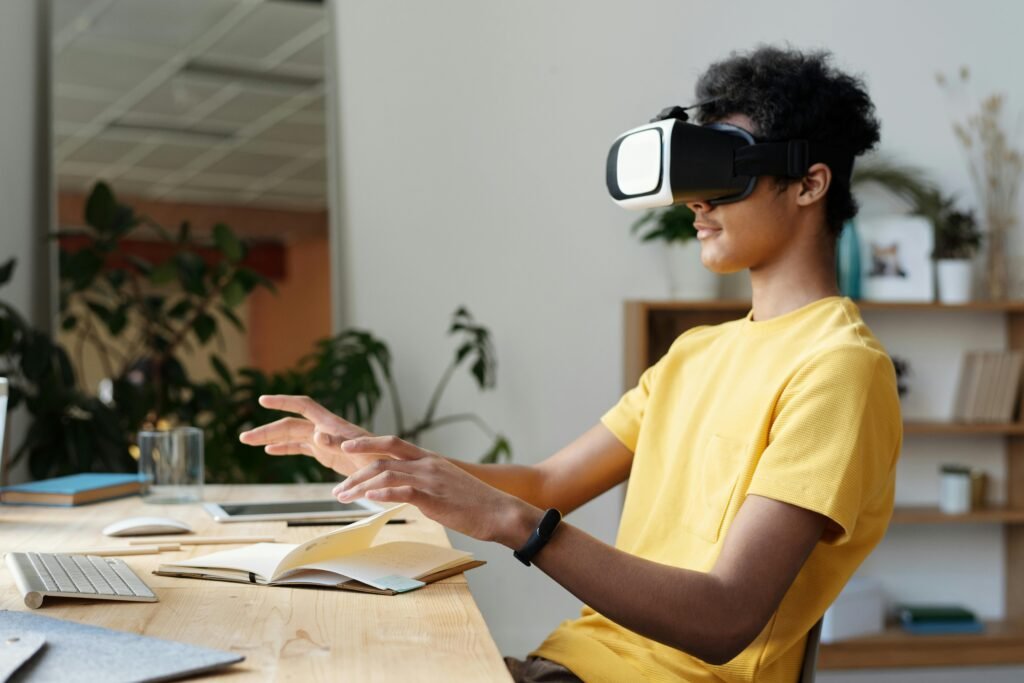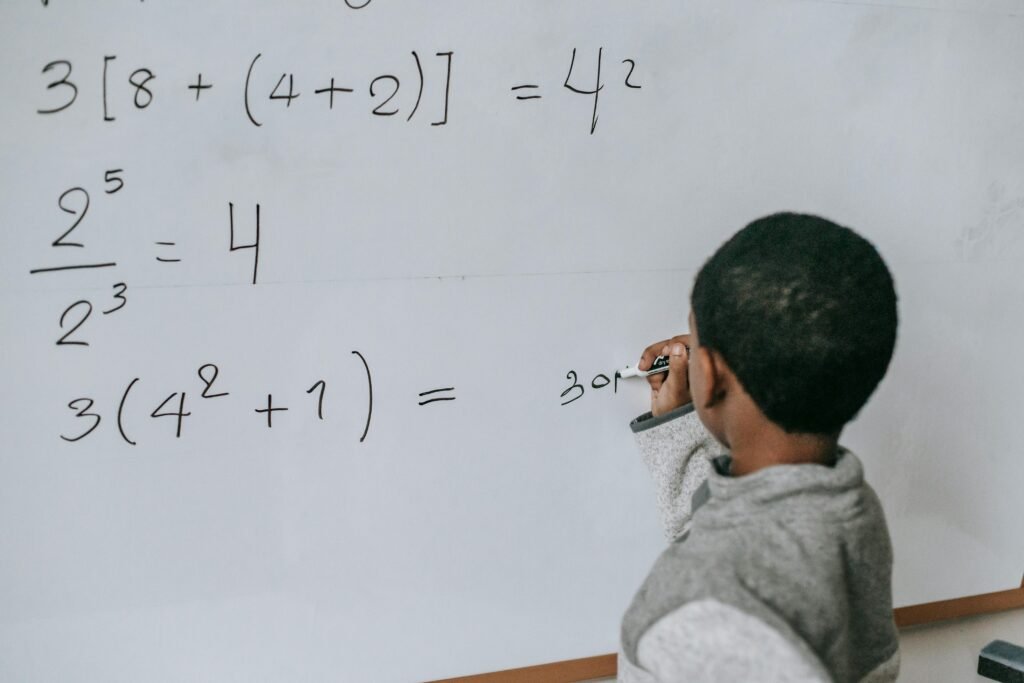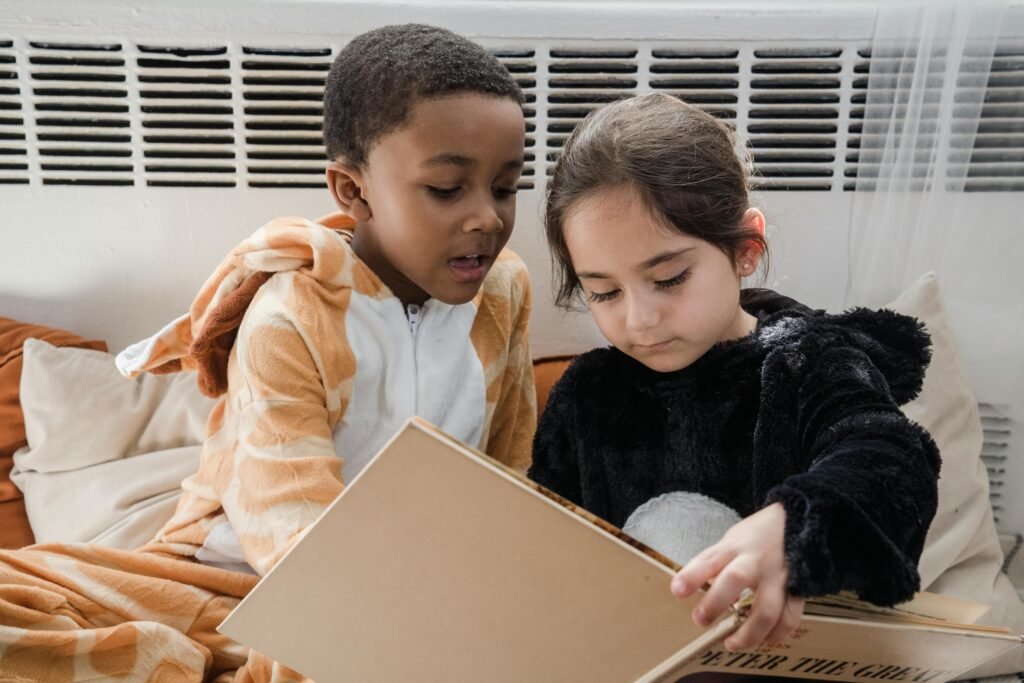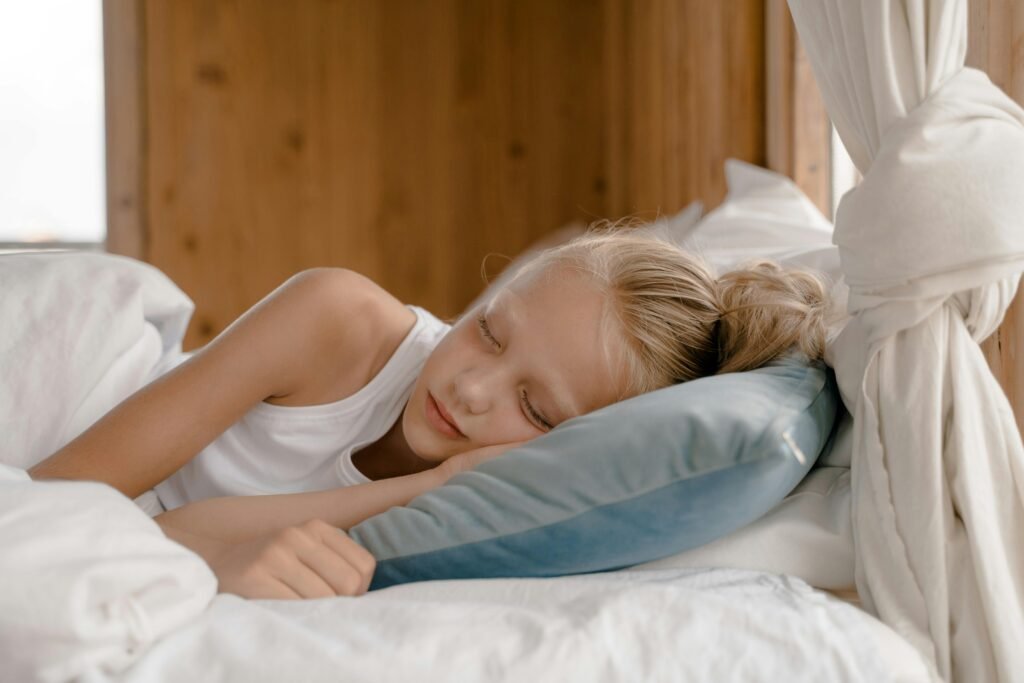Today, millions of kids across the world log in to play games like Roblox, Minecraft, and Fortnite every day. These games aren’t just fun—they’re part of daily life now. And for many parents and teachers, there’s one big question that keeps popping up: How does gaming really affect school performance?
Students who game more than 3 hours a day score an average of 0.4 GPA points lower than those who game less than 1 hour
Time matters. And when it comes to gaming, too much time spent playing can start to show up in school results. The research shows that kids who play games for more than 3 hours each day tend to have lower grades than kids who play less—about 0.4 GPA points lower on average. That might not sound like a lot, but over time, it adds up.
One of the main reasons for this drop is simple: time spent gaming means less time for studying, reading, or doing homework. Even if a child is very bright, losing that time each day can slowly chip away at how well they keep up in class.
Another big factor is sleep. Many kids who play games late into the night aren’t getting the sleep their brains need to focus and remember things. Even one or two late nights can affect how well they do on a test the next day.
Now, this doesn’t mean gaming is bad. It just means that, like anything else, too much can throw things off balance. Gaming can be fun, social, and even educational—but only if it fits into a healthy routine.
So what can parents do? First, take a look at how much time your child spends playing each day. If it’s creeping over the 2-3 hour mark regularly, it may be time to step in. Try setting clear game time limits—something like 1 to 1.5 hours on school days and maybe a bit more on weekends. Let your child help make the rules so they feel part of the plan.
You can also connect game time to responsibilities. For example, no gaming until homework is done. Or, bonus time on weekends for great school performance during the week. This keeps kids motivated and teaches them how to manage their own time.
Lastly, talk about how they feel after gaming. Are they still focused? Do they feel tired? Help them become aware of how screen time affects their brain and body. That’s a powerful life skill in itself.
68% of students who play Minecraft regularly say it helps them with problem-solving in school
Minecraft is more than just blocks and building. For many kids, it’s a mental playground where they learn to think through problems in real time. In a survey, 68% of students who play Minecraft often said it helped them do better with problem-solving at school. That’s a big deal.
In Minecraft, you have to think ahead, try different tools, build with purpose, and find creative ways to stay alive or finish tasks. These are not just game skills—they are thinking skills. And when kids use them over and over again in a fun setting, those habits start to show up in other parts of their life, like math, science, and even reading.
Imagine a child trying to build a working elevator in Minecraft using Redstone. They’re learning logic, planning, sequencing, and trial-and-error. That same thinking shows up when they try to solve a tricky word problem in math or do a science experiment.
To help your child get the most out of Minecraft, encourage them to play in “creative mode” or use “survival mode” with challenges. Suggest fun learning goals like building a city that uses renewable energy, or creating a timeline of ancient history in Minecraft blocks. These kinds of activities tie the game into real-world knowledge.
You can also get involved. Ask them to show you what they’re building. Talk about the problems they faced and how they solved them. This kind of reflection helps them make deeper connections between the game and their learning.
If they love Minecraft, look into Minecraft Education Edition. It’s used in thousands of schools and comes with pre-made lessons that teach real school subjects in a fun, hands-on way.
Fortnite players spend an average of 6–10 hours a week on the game
Fortnite is fast-paced, fun, and full of excitement. But it’s also time-consuming. On average, kids who play Fortnite spend about 6 to 10 hours each week in the game. That’s a lot of time—nearly a full school day’s worth.
The issue isn’t just the number of hours, but what gets pushed aside because of it. That much gaming time can easily cut into reading, outdoor play, or even family time. If your child is playing Fortnite often, it’s important to help them manage that time wisely.
The first step is knowing their schedule. What does a typical day look like for them? Are they finishing homework before gaming? Are they eating on time and getting enough sleep? If gaming is crowding out these essentials, it’s time to restructure their day.
You can also help by making Fortnite a reward instead of a habit. Maybe they get to play after a full week of completed homework or chores. This shifts their focus from “I have to play” to “I earned this.”
Some kids are drawn to Fortnite for the social side—they play with friends, chat through headsets, and feel part of a group. If this is true for your child, make sure they’re getting other kinds of social time too, like talking face-to-face with friends, joining a club, or doing a team sport.
Try creating a “tech swap” routine. For every hour of Fortnite, they can earn screen time with an educational game or learning app. This way, gaming becomes part of a balanced digital life—not the only part.
The goal isn’t to stop them from playing. It’s to help them enjoy the game in a way that fits with their bigger goals—like learning, growing, and getting enough rest.
Kids who play Roblox daily report 25% higher engagement in coding-related schoolwork
Roblox is a game, yes. But it’s also a powerful tool for learning how to build and code. In fact, kids who play Roblox every day say they feel 25% more interested and engaged in coding-related schoolwork. That’s huge, especially in a world where coding is becoming just as important as reading and math.
When kids use Roblox Studio—the platform’s game-building tool—they get hands-on with real programming logic. They learn how to think like a developer, debug problems, and design fun experiences for other people to enjoy. These are the same thinking skills they need in STEM classes at school.
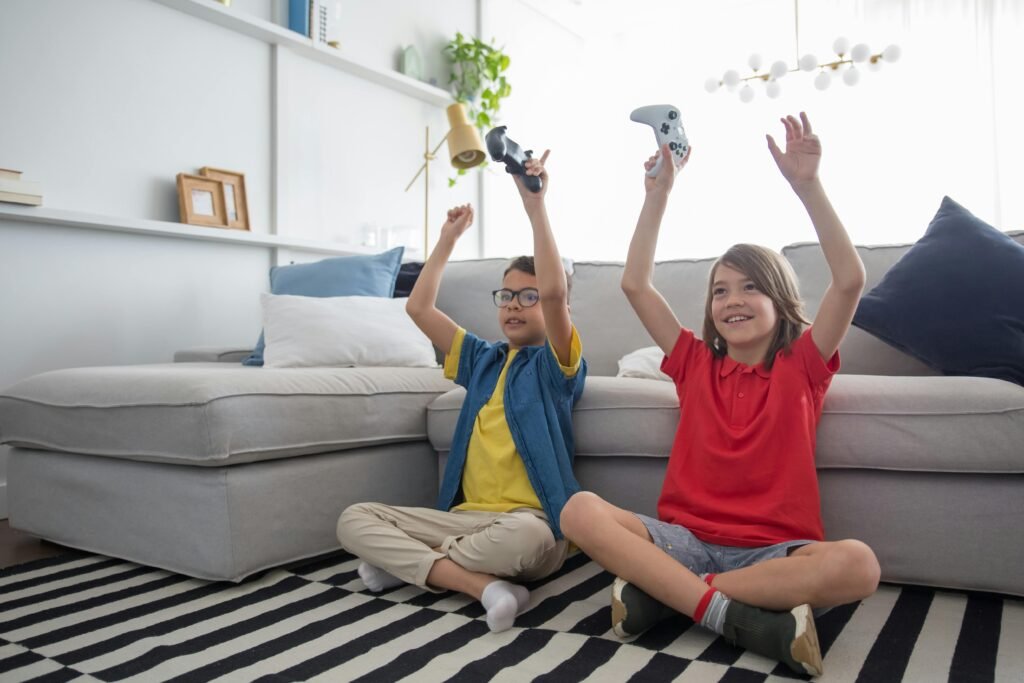
If your child is already playing Roblox, introduce them to Roblox Studio. Let them try building their own mini-game or customizing one that already exists. There are plenty of free tutorials online to help them get started. And the best part? They won’t even realize they’re learning because they’re having so much fun.
Support their coding journey by celebrating their progress. When they fix a bug or finish a project, cheer them on. Share their games with friends and family. When learning feels exciting and rewarding, kids want to do more of it.
If they really enjoy creating, consider enrolling them in an online class that teaches Roblox coding. At Debsie, for example, we offer fun live classes where kids learn how to build and code while working with real teachers and other kids their age.
The sooner a child starts seeing coding as fun, the more likely they are to stick with it and gain valuable skills for the future.
32% of teachers believe sandbox games like Minecraft help students understand math better
If you’ve ever seen your child building a giant tower in Minecraft or digging down to find diamonds, you’ve probably noticed all the counting, measuring, and planning involved. It’s not just play—it’s full of math.
About 32% of teachers say sandbox games like Minecraft actually help students do better in math. That’s because games like these let kids practice math in a way that’s active and visual. Instead of staring at numbers on a page, they get to see how math works.
In Minecraft, for example, players often have to count blocks, measure distances, and make patterns. They might build a house that’s 10 blocks wide or a garden that needs rows of 5 by 5. Without even realizing it, they’re practicing multiplication, area, and symmetry.
To boost this benefit, try giving your child fun building challenges that use math. Ask them to build a pyramid that gets smaller each level or a perfect circle made of square blocks. These tasks sneak math into something they already love doing.
You can also use Minecraft to support school homework. If they’re learning perimeter or volume in class, challenge them to show the concept in a Minecraft build. This makes the lesson real and helps it stick.
For even more structure, Minecraft Education Edition has math-specific lessons made for teachers and students. It’s a great way to bring school into play and turn math into something exciting and hands-on.
And remember, it’s not about replacing math books. It’s about giving kids another way to understand the subject—one that feels natural, fun, and rewarding.
Heavy Fortnite players (10+ hrs/week) have a 22% higher risk of falling behind in schoolwork
There’s no doubt that Fortnite is exciting. It’s colorful, fast, and always changing. But spending too much time on it can cause problems, especially when it comes to school. Data shows that kids who play Fortnite for more than 10 hours each week are 22% more likely to fall behind on their schoolwork.
Why? One big reason is focus. Fortnite is designed to keep players in the game. There’s always another match, another goal, another reason to keep playing. This makes it hard for kids to stop and switch their brain back to school mode.
Another problem is procrastination. When kids know they need to study or do homework, the game can become a way to avoid it. And before they know it, the evening is gone.
To help your child avoid this trap, create a routine where school comes first and gaming comes second. For example, set a “no game until homework is done” rule. If your child tends to rush through homework to get to the game, have them review their work with you before playing.
It also helps to schedule short gaming windows. Maybe they can play for 30 minutes after dinner, but only if everything else is done. This sets clear boundaries while still giving them something to look forward to.
Another great tip is to talk to them about their goals. Ask what they want to achieve at school. Then help them see how their gaming habits are either helping or hurting those goals. When kids feel like they’re in control of their choices, they’re more likely to make smart ones.
Roblox Studio users show a 15% improvement in logical thinking skills over non-users
If your child uses Roblox Studio, they’re doing more than just playing—they’re building. And that’s a big deal. Studies show that kids who use Roblox Studio to create their own games have 15% stronger logical thinking skills compared to kids who don’t.
Logical thinking is all about putting ideas in the right order, solving problems step by step, and finding the cause and effect behind things. These skills are super important in school—especially in subjects like math, science, and coding.
In Roblox Studio, kids use Lua programming to build games. They decide what happens when a player presses a button, how characters move, or how a game level works. Every decision has to make sense in the game world, or the game won’t work.
This kind of thinking is the same kind used in solving math problems or writing computer code. It trains the brain to look for patterns, test ideas, and fix mistakes—something every good learner needs to do well.
To support your child’s interest in Roblox Studio, ask them about their projects. What are they building? What problems did they face? How did they fix them? These questions help them reflect and learn even more from their experience.
You can also help them set small goals like creating a game with a timer, adding music, or coding a simple menu. These challenges grow their confidence and deepen their skills over time.
And if they’re just starting out, sign them up for a beginner-friendly coding class. Debsie offers fun and safe Roblox coding sessions where kids learn how to build and create in a guided way with expert teachers.
40% of Minecraft users aged 10–14 perform above grade level in STEM subjects
Minecraft isn’t just a game—it’s a launchpad for science, technology, engineering, and math. In fact, 40% of Minecraft players between the ages of 10 and 14 score above grade level in STEM subjects. That’s a strong sign that this game is doing more than just entertaining.
Why does Minecraft have this effect? It’s because the game world runs on real systems—gravity, light, machines, coding logic, even biology and ecosystems. Kids get to explore all of this by building, testing, and experimenting. And most importantly, they’re learning through doing.
For example, they might build a water elevator using soul sand and magma blocks. To make it work, they have to understand how water moves, how blocks interact, and how to build with precision. That’s engineering in action.
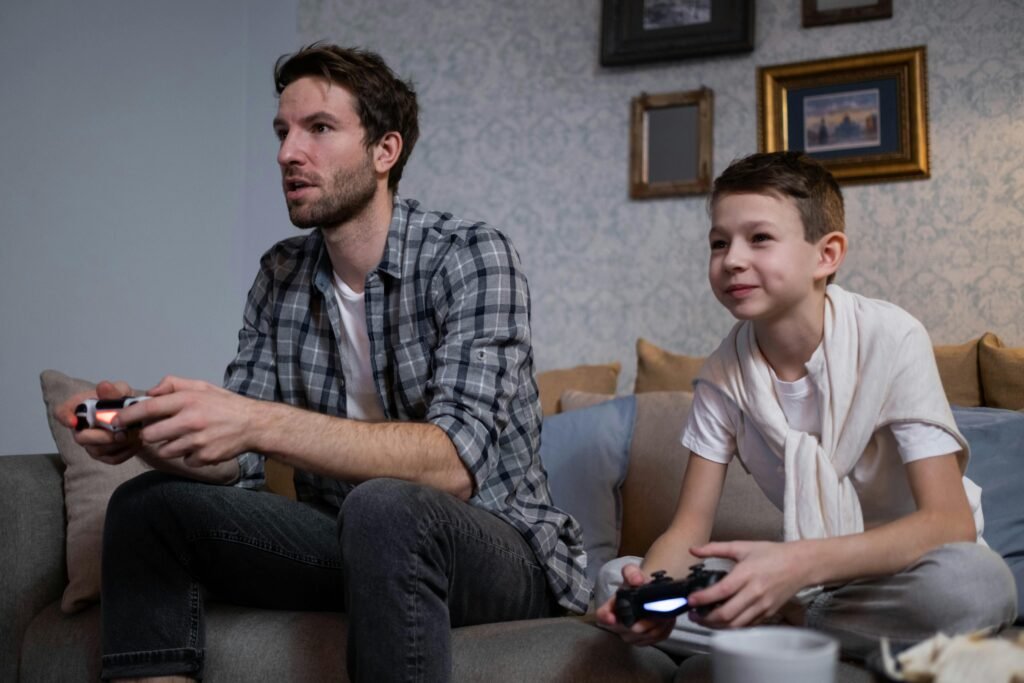
To bring even more STEM learning into their play, try helping them build themed worlds. They could create a solar-powered city, a model of the human body, or even recreate famous science labs from history.
There are also plenty of free resources and lessons online that use Minecraft to teach STEM topics. Or you can sign them up for structured classes like the ones offered at Debsie, where expert teachers guide them through fun science and coding challenges inside the game.
If your child already loves Minecraft, you’re in luck. You’ve got a tool that can turn screen time into serious learning time. The key is to guide their play toward thoughtful, curious, creative goals. When you do that, the learning happens naturally—and it sticks.
Children who game socially (with friends) show 12% higher GPA than solo gamers
Gaming can feel like a solitary activity, but for many kids, it’s a way to stay connected. And here’s something surprising: kids who play games with their friends—not just by themselves—tend to score about 12% higher in their GPA than those who game solo.
Why does this happen? It’s partly because social gaming encourages communication. When kids play multiplayer games like Roblox, Minecraft, or Fortnite with friends, they have to talk, plan, and solve problems together. These skills matter in the classroom too. Students who are good at teamwork, asking questions, and thinking aloud often do better in school.
Playing games with others also helps with emotional growth. Kids learn patience when waiting for turns. They practice handling frustration when things go wrong. And they often feel more motivated when they know a friend is counting on them.
To encourage healthy social gaming, you can help your child connect with classmates or cousins in safe, supervised game sessions. If they’re playing with voice chat, check that the environment is positive and kind. Toxic talk or bullying can quickly cancel out the benefits of social play.
Another good step is to turn gaming into a shared experience at home. Try setting up a family Minecraft world or letting siblings build something together in Roblox Studio. This not only builds relationships, but it also models teamwork and good communication.
And don’t forget offline social skills. Encourage your child to take the teamwork they learn in games into real life. If they’re good at leading in a Minecraft quest, maybe they can lead a group project at school. If they enjoy helping a friend level up, maybe they’ll enjoy tutoring or mentoring in class.
Social gaming done right can be more than fun—it can shape how kids think, talk, and work with others in ways that help them shine in school.
52% of parents say gaming helps their kids learn to focus better—when time is managed
Gaming isn’t just fast action and flashing lights. Many games require deep concentration, quick thinking, and goal setting. That’s why 52% of parents say gaming helps their kids improve focus—but only when the time is managed well.
This tells us something important. Games can build focus, but they can also break it, depending on how they’re used.
Let’s break it down. Many games reward players for staying alert, learning patterns, and practicing repeatedly. This is especially true in strategy games or coding-based games like Roblox Studio or Minecraft challenges. Kids who love these games often develop better attention spans and stronger mental endurance.
But problems begin when the gaming sessions get too long or happen right before study time. A child who just finished a long round of Fortnite may find it hard to settle into a quiet math assignment. Their brain is still in game mode—excited, reactive, distracted.
So how do we find the balance? One trick is to build in short transition breaks. After gaming, give your child 15–20 minutes to stretch, read, or have a snack before starting homework. This lets their mind reset.
You can also schedule gaming time as a reward after study time. For example, 30 minutes of focused reading earns 30 minutes of Roblox. This keeps their focus skills sharp while teaching self-control and time management.
Another smart move is to guide them toward games that require patience, planning, and focus. Games like puzzle adventures or creative build tasks are great for this. You’ll start to see them using that same quiet focus in schoolwork.
When used wisely, games can help your child learn to stick with tough tasks, manage frustration, and stay on track. The key is not to cut out games completely—but to help your child use them with purpose.
11. Students who balance gaming and homework score higher by 0.3 GPA points than those who don’t
Balance is everything. Kids who find a way to enjoy their games and finish their homework do better in school—0.3 GPA points better, in fact. That small difference can be the gap between a B and an A, or between passing and struggling.
What makes balance so powerful is that it teaches time management. Kids who juggle gaming and school learn how to make choices, manage priorities, and plan ahead. These are life skills that go far beyond the classroom.
You can help your child build this balance by creating a clear, consistent routine. For example, homework first, then gaming. Or specific time blocks each day—study from 4 to 5, then game from 5 to 6. Kids thrive on routine, and it helps them stay on track without having to fight about it every day.
Another helpful strategy is using timers. When gaming time starts, set a visible countdown. This takes the pressure off you and helps your child manage themselves. When the timer beeps, it’s time to wrap up—no debate needed.
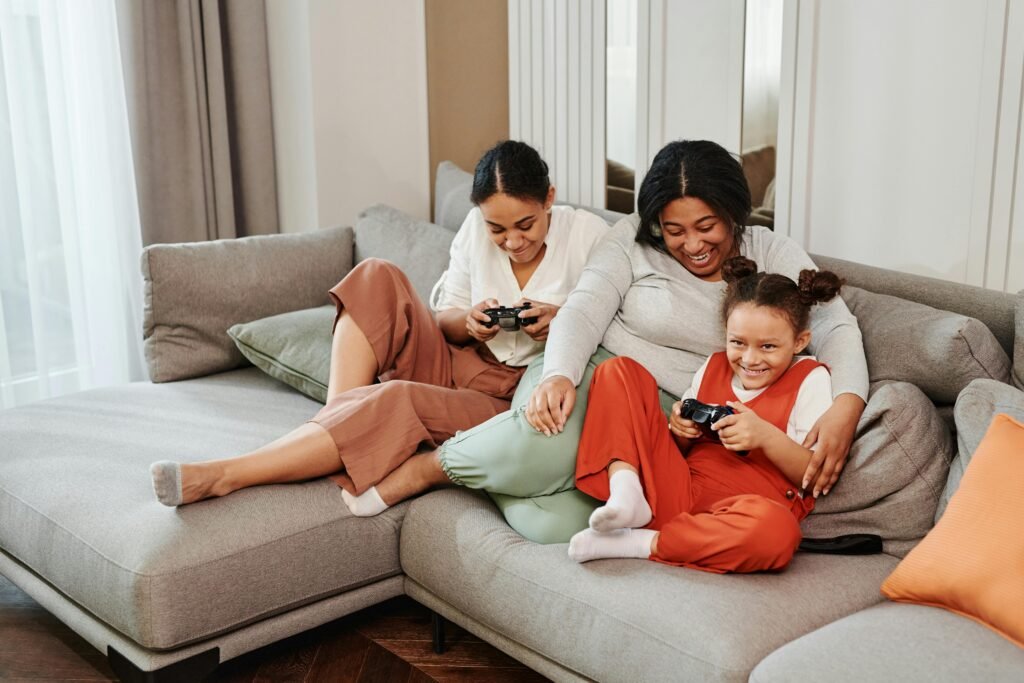
It’s also great to involve your child in the schedule. Ask them what works best for them. Do they concentrate better with a snack first? Do they need a break between subjects? When kids help make the plan, they’re more likely to follow it.
And don’t forget the emotional side. Celebrate when they manage their time well. Give praise not just for high grades, but for effort and good habits. This builds their confidence and encourages them to keep trying.
Balanced kids are not only better students—they’re also more relaxed, more confident, and more in control of their lives. And that’s the kind of success that lasts.
12. Kids using Minecraft Education Edition score 27% higher in spatial reasoning tests
Minecraft Education Edition isn’t just fun—it’s a full learning platform. And it’s especially good at one thing: spatial reasoning. Kids who use this version of the game score 27% higher on tests that measure how well they can think in 3D, understand space, and solve visual puzzles.
Spatial reasoning is key in many school subjects, especially geometry, science, and engineering. It also helps in everyday tasks like reading maps, estimating sizes, and even organizing ideas when writing.
In Minecraft Education Edition, kids explore real topics—like math, science, history, and coding—through hands-on activities. They might build a replica of an ancient city, create a system to purify water, or simulate ecosystems with animals and plants.
These kinds of tasks push kids to think carefully about shape, distance, and structure. They have to plan, visualize, and build—all while solving real-world problems.
To help your child tap into this learning power, encourage them to try Minecraft Education Edition at home or through school. It’s free for many schools and offers guided lessons that connect directly to what they’re learning in class.
You can also challenge them to build projects that require careful planning. For example, a replica of your home, a maze with hidden doors, or a working elevator system. These activities develop the same spatial skills that engineers, architects, and scientists use every day.
And if they’re not sure where to start, Debsie offers live classes that use Minecraft to teach math and science. These classes are fun, interactive, and perfect for kids who learn best by doing.
Spatial thinking is one of those “hidden superpowers” that helps kids succeed across many areas. Minecraft just makes it feel like play.
29% of Fortnite players admit gaming late at night affects their school performance
It’s not just how much kids play—it’s when they play. Nearly 29% of Fortnite players say that staying up late to game has made them do worse at school. That’s nearly 1 in 3 kids admitting that their own gaming habits are getting in the way of their learning.
Late-night gaming can hurt school performance in two big ways. First, it cuts into sleep. When kids stay up past bedtime—even by just an hour—they often wake up tired, sluggish, and less able to focus. This makes it harder to follow lessons, complete assignments, or do well on tests.
Second, gaming at night often becomes emotional. Fortnite especially is high-energy and competitive. Playing intense rounds right before bed can keep the brain wired. It’s hard to fall asleep after that, even if the device is turned off.
If your child has a habit of late-night gaming, don’t panic—but do take action. Start with a calm conversation. Ask them how they feel in the mornings. Are they tired? Is it hard to concentrate in class? Help them connect the dots between late-night screen time and school stress.
Next, set a firm cutoff time for devices—ideally 1 to 2 hours before bedtime. This gives their brain time to wind down. Use that pre-bed time for quiet activities like reading, drawing, or even just chatting about the day.
Make the bedroom a no-device zone if you can. Keep consoles and tablets in shared spaces, and use apps or timers to help manage usage.
Also, talk to them about goals. If they’re serious about gaming, they need to treat their brain and body well. Even professional e-sports players focus on sleep, nutrition, and mental health. Show your child that balance isn’t a punishment—it’s a skill every champion learns.
Getting enough sleep doesn’t just improve grades—it helps kids feel better, think clearer, and enjoy gaming even more the next day.
Minecraft modders are 80% more likely to take an interest in programming
Minecraft has a special group of players called modders. These are kids who go beyond just playing the game. They change it. They build their own custom features, new creatures, and tools inside the Minecraft world—and to do that, they have to learn some real programming.
Research shows that Minecraft modders are 80% more likely to get interested in programming than regular players. That’s a huge deal, especially in a world where coding is one of the most valuable skills a child can learn.
Modding teaches kids how to think like programmers. They learn how to install coding tools, follow logic structures, and solve bugs. They also get a real taste of what it feels like to build something and see it come to life.
And it’s not just about technical skills. Modding boosts creativity and perseverance. When something breaks in their code, they have to dig in, figure it out, and fix it. That builds confidence and patience—two things every learner needs.
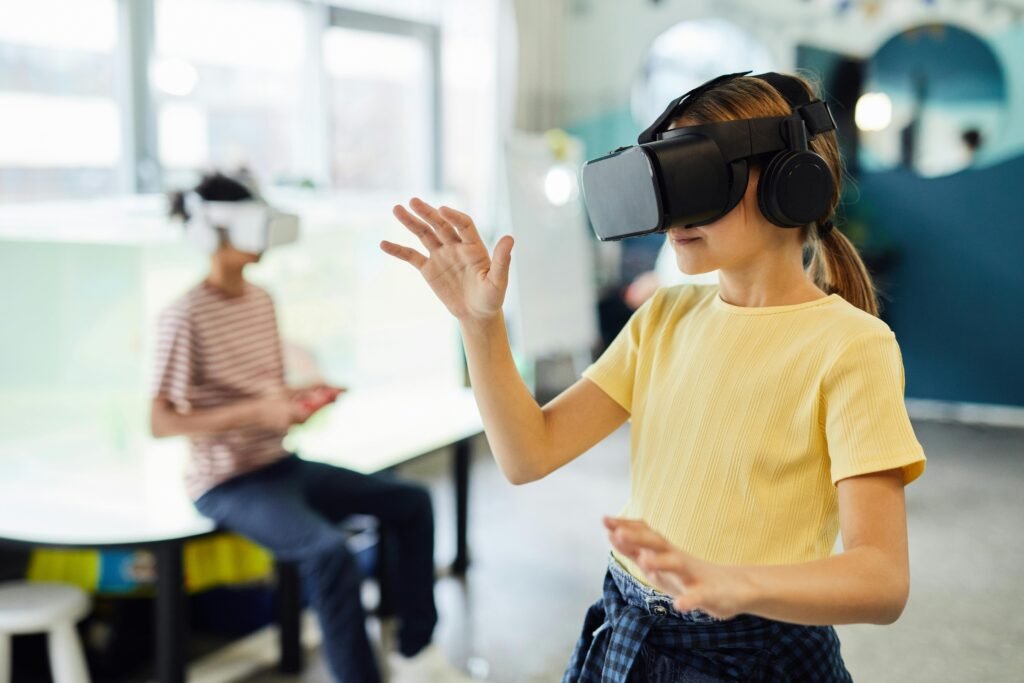
To support your child’s interest in modding, start by helping them explore tools like MCreator or LearnToMod. These are safe, beginner-friendly platforms made just for Minecraft modding. Many are free or low-cost, and some even offer lessons and community support.
Make time for your child to show off what they create. Ask them to walk you through their mods, explain what they changed, and how it works. This builds excitement and helps them take pride in their learning.
If they love it, go deeper. Enroll them in a coding course that teaches Java or Python through Minecraft. Debsie offers classes like this, where expert teachers guide kids step-by-step while keeping it fun and age-appropriate.
Kids who learn to code early are building future-ready skills. And Minecraft modding is one of the most joyful, low-pressure ways to begin that journey.
Roblox game developers aged 13–17 make up 42% of the top creators
Roblox isn’t just a place to play games—it’s a place to create them. And some of the best, most popular games on the platform are being built by teens. In fact, 42% of Roblox’s top creators are between the ages of 13 and 17.
This stat changes everything. It shows that young people aren’t just consumers of content—they’re builders, entrepreneurs, and innovators. On Roblox, a teenager can design a game, get players from all over the world, and even earn real money doing it.
What’s behind this success? It starts with creativity. Roblox Studio gives kids the tools to design levels, write scripts, and build worlds. But it also requires discipline. Top teen creators don’t just dream up ideas—they follow through, debug code, and respond to user feedback.
If your child loves Roblox, encourage them to try creating instead of only playing. Start small. Help them set up Roblox Studio and build a basic obstacle course or roleplay world. There are tons of free YouTube tutorials to guide them.
Support them with time, praise, and encouragement. Like any creative skill, game design takes practice. Celebrate progress, even if it’s just getting a script to work or designing a new avatar.
You can also connect them with a community. Roblox dev forums, Discord groups (age-permitting), and live classes like those on Debsie help kids learn from others and stay motivated.
What’s most exciting is this: by creating in Roblox, your child isn’t just learning coding. They’re learning how to plan, work through challenges, express ideas, and maybe even run a small business. That’s a serious head start on the future.
Students in game-based learning programs improve GPA by an average of 0.6 points
Imagine if school felt more like a game. That’s what game-based learning is all about—and the results speak for themselves. Students who participate in game-based learning programs see an average 0.6 point increase in GPA. That’s a big jump.
So what is game-based learning? It’s not just playing games during free time. It’s when educational games are built into the lessons themselves. Instead of worksheets, kids solve puzzles. Instead of lectures, they explore virtual worlds or complete missions that teach real concepts.
This works because it taps into how kids naturally learn. Games provide instant feedback, clear goals, and a sense of progress. Kids get to try, fail, try again, and succeed. That’s real learning.
When games are used to teach, students are more engaged. They pay more attention, stay on task longer, and feel more confident about tricky subjects.
If you want your child to benefit from this kind of learning, look for programs that include games in their teaching approach. At Debsie, we design many of our live and digital classes around game-style challenges. Whether it’s coding, math, or science, the lessons are interactive, hands-on, and exciting.
You can also bring game-based learning home. Apps like Prodigy for math, or learning-based Minecraft mods, turn homework into fun quests. Even simple flashcard games or quiz apps can keep learning light and rewarding.
And don’t be afraid to play with your child. When you join the game, you show them that learning is something you enjoy too. That creates a powerful connection—and it helps them see school not as something boring, but as something worth exploring.

A boost in GPA is great. But what’s even better is the smile that comes from learning something new in a way that feels like play.
76% of parents say their child’s vocabulary grew from playing games like Roblox and Minecraft
At first glance, games like Roblox and Minecraft might not seem like vocabulary-builders. But ask any parent, and they’ll tell you otherwise. In fact, 76% of parents say their child’s vocabulary improved thanks to these games.
Why? Because these games are full of reading, chatting, and thinking out loud. Kids learn new words as they explore worlds, read instructions, chat with friends, or follow guides and tutorials. Whether it’s crafting a “respiration potion” in Minecraft or “script editing” in Roblox Studio, kids are absorbing terms they wouldn’t normally hear in everyday life.
It’s not just game words either. Many kids use online guides, wikis, and how-to videos. They’re reading long-form content, often written at a high level, to learn how to do something cool in the game. That’s a big deal for developing reading comprehension and vocabulary.
To make the most of this, encourage your child to read more about the games they love. Help them find safe online forums, blogs, or even books that go deeper into their favorite topics. If they’re into Minecraft, there are entire novels and guides based on it. Roblox has dev blogs and tutorials that are like mini tech textbooks.
Also, when your child uses a new word they picked up from a game, take a moment to talk about it. Ask them what it means. Praise their curiosity. This helps them feel proud of their learning and keeps them interested in words.
You can also turn it into a writing activity. Ask them to write their own game review, or a story set in their favorite game world. They can even make a how-to guide for a younger sibling. This stretches their vocabulary even further, and helps them practice expressing ideas clearly.
Gaming and language may not seem connected—but they are. And when kids use games as a doorway to reading, writing, and learning new words, they’re building skills that last a lifetime.
Students with moderate gaming habits (1–2 hrs/day) perform best in school
There’s a sweet spot when it comes to gaming. It’s not zero, and it’s not endless hours either. The research is clear: kids who game for 1 to 2 hours a day do better in school than those who don’t game at all—and much better than those who game too much.
Why is this range so powerful? Because moderate gaming provides the perfect mix of stimulation and structure. It gives kids a mental break after school, lets them socialize or be creative, and still leaves time for homework, rest, and family life.
Games in small doses can help improve attention, sharpen reflexes, and even reduce stress. They also give kids something to look forward to—a reward for finishing schoolwork or chores. That boost in motivation often leads to better focus and effort in school tasks.
If your child is already in the 1–2 hour zone, you’re in a great place. Just keep the balance by setting clear rules: homework first, game second. Use a timer to make limits feel fair and firm. And keep screens out of bedrooms so they don’t interfere with sleep.
If your child games more than 2 hours a day, you don’t have to cut them off completely. Start by shaving off 15–30 minutes at a time. Replace that extra screen time with something fun—like cooking together, playing a board game, or a quick trip to the park. The goal is to show that life is full of fun—not just inside a screen.
And for non-gamers, that’s okay too. But know that a little gaming—especially educational or creative games—can actually help some kids recharge and refocus.
In the end, it’s all about moderation. When kids enjoy their games and stay on top of school, they learn how to build a healthy, balanced life. That’s a powerful lesson at any age.
9 out of 10 Minecraft users say the game helps them stay curious about learning
Curiosity is the fuel for all great learning. And according to surveys, 9 out of 10 kids who play Minecraft say it keeps them curious. That’s huge. It means Minecraft isn’t just entertaining—it’s actively inspiring kids to ask questions, explore ideas, and dig deeper into the world around them.
Minecraft gives kids an open world with endless possibilities. Want to build a Roman temple? Go ahead. Want to recreate your school or neighborhood? You can. Every block placed is a chance to try something new. And every mistake is just part of the learning.
The beauty of Minecraft is that it lets kids follow their own curiosity. They aren’t limited by instructions. They can explore physics by building roller coasters, learn architecture by designing cities, or practice teamwork by joining group builds.
To help your child stay curious, lean into their Minecraft projects. Ask them what they’re building, what they want to try next, and how they learned to do it. When they ask big “why” or “how” questions, go look up the answers together.
You can also suggest fun learning challenges. Ask them to recreate a famous landmark, simulate a science experiment, or build a food chain with mobs and biomes. These tasks connect play to real learning in a hands-on way.
And don’t forget to praise the questions they ask, not just the final build. Curiosity is a muscle, and the more they use it, the stronger it gets.
When a child is curious, they become active learners. They don’t just wait to be taught—they want to discover. Minecraft does a great job of nurturing that spirit. And as a parent, you can help turn that spark into a lifelong flame.
Over 65% of teachers use Minecraft in class to support science and history lessons
Teachers are smart. They know what gets kids excited. And more than 65% of teachers now use Minecraft in their classrooms—especially for science and history. That’s because it turns abstract ideas into things kids can see, build, and explore.
In science, Minecraft lets kids test ideas by creating working machines, simulating water cycles, or experimenting with ecosystems. Instead of just reading about electricity, they build Redstone circuits and see how they work.
In history, they might walk through ancient pyramids, recreate historical events, or build a timeline inside the game. Suddenly, history is not just names and dates—it’s a living world they can interact with.
If your child’s school doesn’t use Minecraft yet, you can still bring the magic home. There are free lesson plans online that tie Minecraft into school subjects. Or, try simple challenges like building a model of the solar system, a food web, or a medieval castle.
You can also talk to their teacher. Ask if Minecraft can be used for a project or extra credit. Many teachers are open to creative ideas, especially when it gets kids excited about learning.
Another great option is Debsie’s Minecraft-based classes. These sessions are led by expert teachers and mix game play with real learning goals. Whether it’s science, geography, or even writing, we use Minecraft to make the lessons come alive.
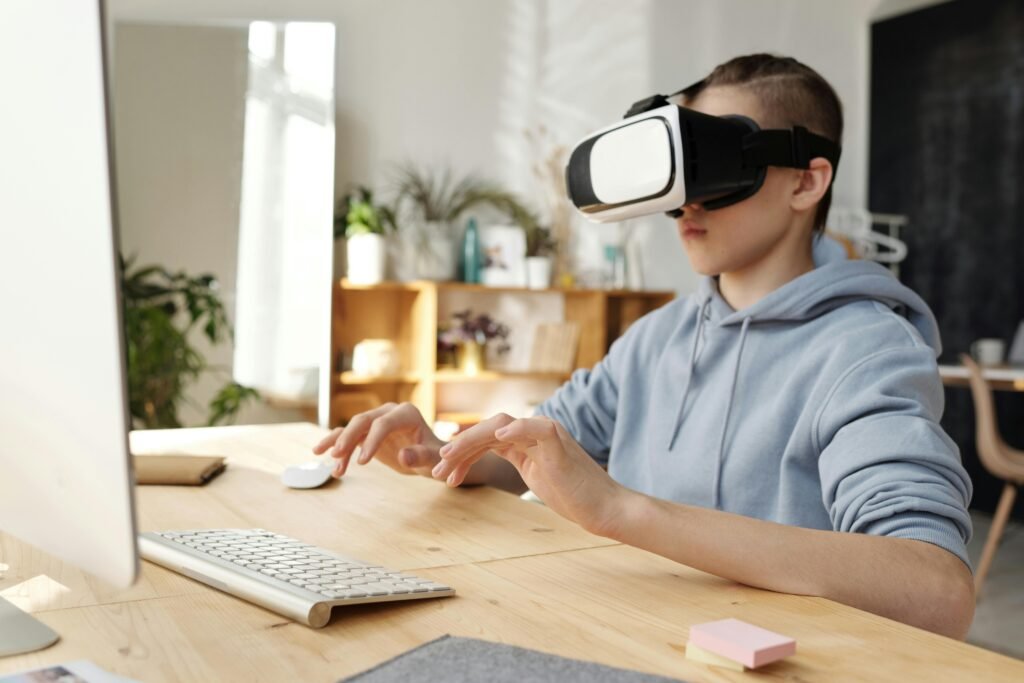
When teachers and parents use games like Minecraft as learning tools, it changes how kids feel about school. It makes learning more fun, more real, and more connected to the things they already love.
Conclusion:
So, what do all these stats tell us?
They tell us that gaming—especially games like Roblox, Minecraft, and Fortnite—isn’t just a waste of time. It’s a powerful tool. In the right amount and with the right support, gaming can help kids grow smarter, sharper, and more curious. It can teach them how to solve problems, manage time, code, focus, and even build real-world skills that last a lifetime.
